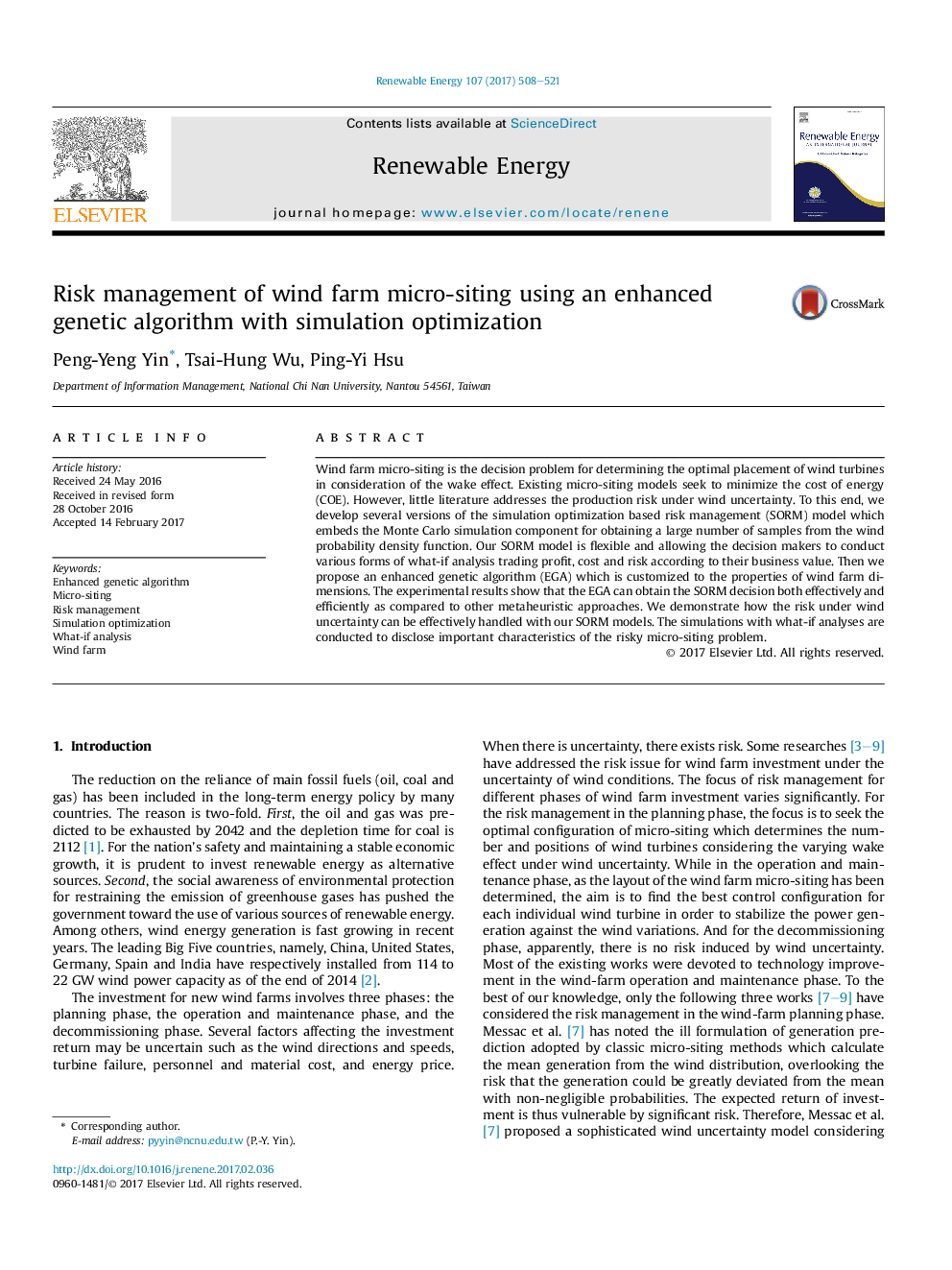ترجمه فارسی عنوان مقاله
مدیریت ریسک میکرواسپینگ مزرعه باد با استفاده از الگوریتم ژنتیک پیشرفته با بهینه سازی شبیه سازی
عنوان انگلیسی
Risk management of wind farm micro-siting using an enhanced genetic algorithm with simulation optimization
| کد مقاله | سال انتشار | تعداد صفحات مقاله انگلیسی |
|---|---|---|
| 95836 | 2017 | 14 صفحه PDF |
منبع

Publisher : Elsevier - Science Direct (الزویر - ساینس دایرکت)
Journal : Renewable Energy, Volume 107, July 2017, Pages 508-521
ترجمه کلمات کلیدی
الگوریتم ژنتیک پیشرفته، محل قرارگیری میکرو، مدیریت ریسک، بهینه سازی شبیه سازی، تجزیه و تحلیل چه؟ مزرعه باد،
کلمات کلیدی انگلیسی
Enhanced genetic algorithm; Micro-siting; Risk management; Simulation optimization; What-if analysis; Wind farm;

